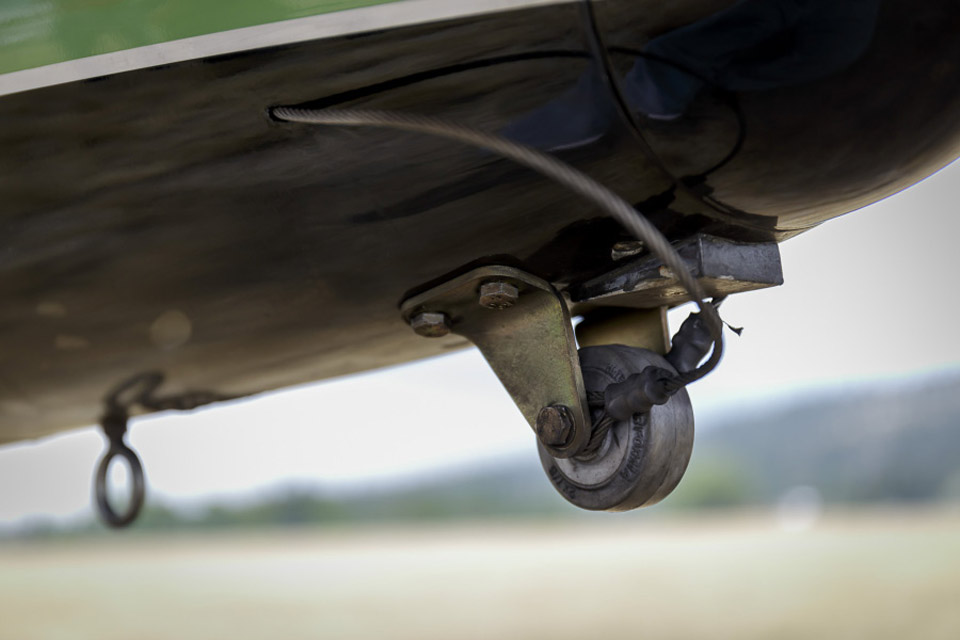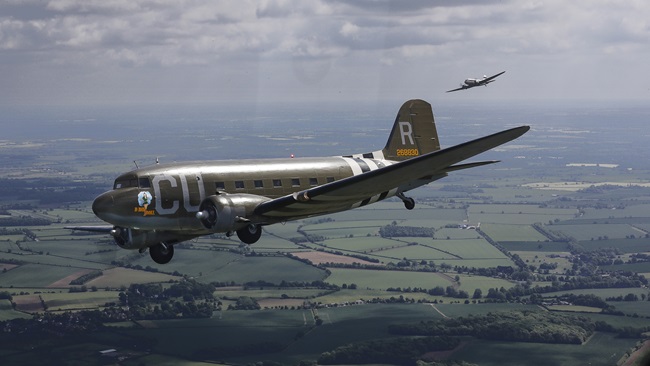Start up, taxi, and takeoff in the Glasair Sportsman Diesel is more like operating a jet than a kitbuilt Experimental four-place single. Touch a button and it starts—no multi-handed monkey motion required. The engine runs smoothly as we taxi. For takeoff, jam the throttle forward on the turbo diesel and away you go—no worry about overboosting the turbo. Unlike the piston engines most of us fly behind, this Mercedes-Benz-based diesel engine and its systems are rooted in the twenty-first century, rather than the FDR era.
Cool as the diesel option might be, one has to ask: Why? Why add $60,000 to the price of a four-place kitbuilt to install an engine that puts out 25 fewer horsepower than the usual Lycoming avgas option? For the North American market, the payback is long and slim, admits Nick Frisch, director of sales and marketing at Glasair Aviation USA, LLC, which builds components for the Glasair kits in Arlington, Washington. But the company, now owned by the Jilin Hanxing Group of China, has eyes on the international market, where the price difference between Jet A and avgas can be as much as $15 a gallon. Where a gallon of jet fuel costs $4.50, avgas might be $20—if avgas is available at all. Both fuels are widely available in North America and the price difference often is less than a dollar
Few operators could make the math work, despite a maximum fuel burn of 8.8 gallons per hour and a typical cruise burn closer to five, compared to the 180-horsepower Superior XP-360 burning eight to 10 gallons of 100LL in cruise. A backcountry enthusiast who only sees a fuel pump twice a month also might appreciate the lower fuel burn and greater range, but for most in North America, the return is in the form of better altitude performance with the turbo and, well, the cool factor of flying a 2.0-liter turbo diesel with full authority digital engine control (FADEC). Nothin’ wrong with that.
The impetus for bolting a Continental CD-155 engine on the front of a Sportsman came from a customer who was building his own, explains Frisch. Exploiting the freedoms of the Experimental world, the company enthusiastically supported the project, anxious to see how it went. With success, the company built its own version, shown on these pages where we caught up with it at Spokane, Washington, during the AOPA Fly-In this summer—a couple of weeks after its appearance at EAA AirVenture.
The engine fits the airframe surprisingly well, but a diesel’s demanding cooling needs required significant cowling changes, including individual inlets for the intercooler, oil cooler, and radiator. The combustion air inlet is on the right side. Out front, a red-tipped three-blade MT composite propeller does the real work.
While a young design, the engine has a tortured history. German engineer Frank Thielert developed the powerplant out of Mercedes auto engines his company modified for the auto racing industry. He brought it to market in the early 2000s, with quick adoption by Diamond Aircraft. Cessna announced in 2007 that it would offer a Skyhawk with the engine. But that all happened about the time the German government caught up with Thielert for some questionable bookkeeping and related tax problems.
Meanwhile, the engine was exhibiting reliability problems, especially related to the gearbox that reduces the engine RPM to something the prop can handle. Bankruptcy quickly followed. The engine reemerged as the Centurion before Continental last year, itself under new Chinese ownership, bought the product line and began an effort to improve it and develop higher-horsepower variants.
One of the challenges is boosting the engine’s time before replacement (TBR) to something more than than the current 1,200 hours; the gearbox must be replaced at 600 hours—a $3,000 to $4,500 item. Continental says it gathering reliability data to soon announce a significant boost in that number. As a further show of confidence, Cessna this summer announced its intention to offer a Skyhawk with the CD-155—essentially the same project it announced back in 2007, but couldn’t deliver because of the Thielert bankruptcy.
Even on standard-temperature days, the engine may need a little temperature boost from glow plugs to get started. If so, a light on the digital engine display will alert the pilot. Press a button to actuate the glow plug sequence. When it extinguishes, you’re good to push the Start button and the engine will start with little fanfare—like starting your Mercedes. Thanks to the FADEC, engine control is via a single lever. The dual-channel system manages the prop and mixture controls to provide best performance given the phase of flight and ambient conditions. During normal operations, the A FADEC channel runs the engine. Should there be a problem, the B channel will automatically take over; or the pilot can choose the other channel via a switch. The FADECs, which require electrical power to operate, have their own backup battery, which kicks in should the alternator and the ship’s battery fail; the panel displays have their own battery backups too.
On Runway 22 Right at Spokane’s Felts Field, I shoved the lever forward and the little airplane surged ahead. We soon formed up on a Bonanza A36 for a photo mission. I’d flown a Sportsman before and quickly remembered how much fun it is to fly. The center stick and tight flight controls give it a responsive feel. Some want to compare the Sportsman to the Cessna 172, but the Experimental airplane has much more responsive controls. Unlike the Skyhawk, though, the Sportsman’s aft two seats are both optional and facing backward, with passenger legs extending into the tail cone.
It’s roomier and more comfortable than it sounds, with good visibility out the side and back windows. If you don’t need the seats, pull out the seat cushions and stuff it full of camping gear. With a tailwheel, tundra tires, and a takeoff distance as short as 300 feet on the 210-horsepower avgas model, it is a formidable backcountry airplane.
The center fuselage is a steel-tube frame, to which the engine, gear, and wing mounts attach, providing good crash protection. The wings fold and the tail can be removed for trailering or to save hangar space—a feature Frisch said many customers like, but few actually use. The structure makes it easy to swap types of landing gear. Changing from tricycle to tailwheel or putting on skis or floats can be done in a matter of hours. Many builders get both the tricycle and tailwheel kits; about 10 percent are put on floats, according to Frisch. The wings and tail surfaces are aluminum; fuselage skins are fiberglass. A $15,000 carbon fiber option increases useful load by 150 pounds.
Most fiberglass avgas-powered models end up with a useful load of 800 pounds; about 700 pounds with the heavier diesel engine. However, with the lower fuel burn, a pilot has the option to leave some of the 50 gallons of jet fuel behind and carry more cargo.
At 5,500 feet and 85-percent power, the airplane showed a true airspeed of 137 knots on 7.2 gph; at 60-percent power the speed dropped to 112 knots and fuel burn to 4.9 gph. Frisch reported that en route to EAA AirVenture at 11,500 feet he cruised at 139 KTAS.
At the other end of the flight envelope, the airplane, rather than stalling, simply settled straight ahead at 42 knots indicated airspeed with the two-position flap switch all the way down. Four chevron-shaped vortex generators on top of the wing help keep air energized over the ailerons, improving control at slow speeds. Strakes just ahead of the horizontal stabilizer improve the stability as well. Standard-rate turns at 50 knots were solid and comfortable.
While Glasair’s unique Two Weeks to Taxi program, which knocks about 1,000 hours off the usual 2,000-hour build time, is an option for any Sportsman builder, it is a requirement for those installing a diesel engine while the company gains experience with the process. You show up, work hard for two weeks, and at the end your new airplane is up on its gear, engine hung, at least basic panel installed, and ready to taxi. It’s a remarkably efficient way to jumpstart a build project.
Besides a choice of Lycoming, Superior, or Continental engines, the builder also has multiple avionics options. The Sportsman Diesel we flew carried dual 8.4-inch primary and multifunction displays from Advanced Flight Systems and a Garmin GTN 650 navigator. Two round digital displays showed engine data, RPM, fuel flow, and percent of power.
A base avgas-powered kit with the TWTT option sells for $189,750. Add the $60,000 diesel option and you’re just south of $250,000. Avionics? The sky’s the limit. The model we flew topped out at about $295,000. Frisch noted that about 20 percent of Sportsman deliveries are shipped out of the country, an especially attractive market for the diesel.
Not really up to building your own? Frisch said Jilin Hanxing Chairman TieJi Fang is looking into developing a Primary category version of the Sportsman. Meanwhile, the company has already announced a Light Sport model. With a desire to develop products for China, Frisch said, Fang is ready and willing to put resources into new product development. So the Sportsman Diesel may be just the first of many to come from Glasair.
Email [email protected]
Photography by Mike Fizer
SPEC SHEET
Glasair Sportsman Diesel
Base price: $249,000
Price as tested: $295,000
Specifications
Powerplant | Continental CD-155 Turbo Diesel, 155 hp
Recommended TBR | 1,200 hr
Propeller | MT Propeller, composite
Length | 23 ft
Height | 9 ft 4 in
Wingspan | 35 ft
Wing area | 131 sq ft
Wing loading | 19.1 lb/sq ft
Power loading | 16.1 lb/hp
Seats | 4
Cabin width | 3 ft 10 in
Empty weight | 1,550 lb
Max gross weight | 2,500 lb
Useful load | 950 lb
Payload w/full fuel | 615 lb
Max takeoff weight | 2,500 lb
Fuel capacity, std | 50 gal, 335 lb
Baggage capacity | 300 lb, 37 cu ft
Performance
Takeoff distance, ground roll | 900 ft
Rate of climb, sea level | 900 fpm
Max level speed, 9,000 ft | 143 kt
Cruise speed/endurance w/45-min rsv, std fuel (fuel consumption)
@ 75% power, best economy | 132 kt/ 6.4 hr (49 pph/7.3 gph)
@ 65% power, best economy | 122 kt/ 8.6 hr (39 pph/5.2 gph)
Max operating altitude | 24,000 ft
Service ceiling | 24,000 ft
Landing distance over 50-ft obstacle | 1,200 ft
Landing distance, ground roll | 400 ft
Limiting and recommended airspeeds
VX (best angle of climb) | 65 KIAS
VY (best rate of climb) | 75 KIAS
VA (design maneuvering) | 101 KIAS
VFE (max flap extended) | 90 KIAS
VNO (max structural cruising) | 140 KIAS
VNE (never exceed) | 162 KIAS
VS1 (stall, clean) | 51 KIAS
VSO (stall, in landing configuration) | 42 KIAS
Extra
By comparison, the Cessna 182 is three feet, six inches wide.
For more information contact Glasair Aviation, 18530 59th Drive NE, Arlington, Washington 98223; email [email protected]; telephone 360-435-8533.
All specifications are based on manufacturer’s calculations. All performance figures are based on standard day, standard atmosphere, sea level, gross weight conditions unless otherwise noted.
Video: View an AOPA Live This Week video on this story.
















